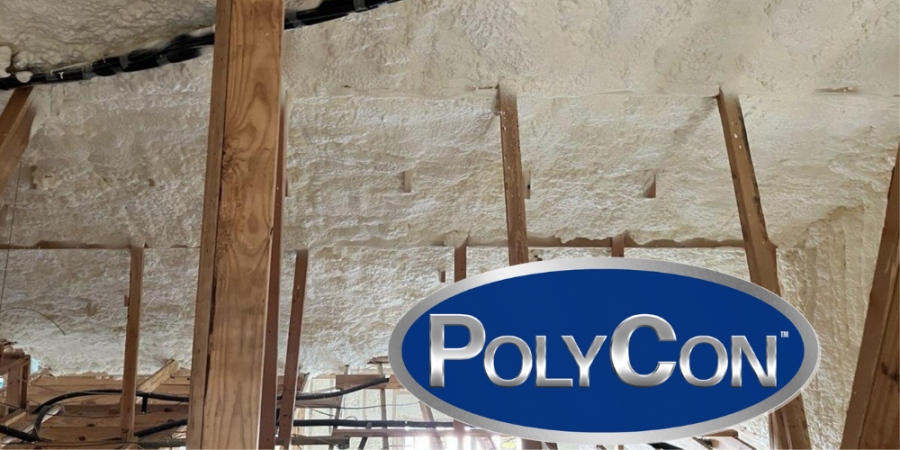Polyurethane Industry Organizes Spray Polyurethane Foam Product Stewardship Program
As the spray polyurethane foam (SPF) industry has undergone rapid growth over the past few years, it has attracted the attention of federal regulatory agencies. In early 2009, the U.S. Environmental Protection Agency (EPA) formed an interagency work team with the focus of seeking to reduce potential worker and consumer exposures to isocyanates contained in spray polyurethane foam chemicals. EPA expressed broad interest in two-component high pressure SPF; two-component low pressure SPF; and insulating foam sealant products. EPA engaged the U.S. Occupational Safety and Health Administration (OSHA), National Institute of Occupational Safety and Health (NIOSH), and the U.S. Consumer Product Safety Commission (CPSC) in discussions across a wide variety of issues, including how hazard and risk information is communicated to workers; EPA’s perception that “green” marketing claims could create interference with hazard and risk communications; mechanisms to develop and implement installation practices to support reduced potential for exposure; and potential research projects in areas such as air emissions, cure times, total isocyanate test measurement, and ventilation procedures. In mid 2009, EPA began discussions with American Chemistry Council’s Center for the Polyurethanes Industry (CPI) on these same topics, exploring the possibility of industry product stewardship engagement on a voluntary basis.
In the summer of 2009, CPI, working with the Spray Polyurethane Foam Alliance (SPFA), launched an enhanced SPF product stewardship program and developed a series of guidance documents, including posters, Q&A’s and videos, that focus on the use of personal protective equipment, respiratory protection, re-entry times, hazard communications and emergencies. The program was designed “to support further understanding of the benefits of spray polyurethane foam and its continued safe use and handling.”
The primary items the agencies wanted to address were worker health and safety training as well as outreach and communication to the larger SPF contractor community. As much of the industry already realizes, it is crucial to understand hazard communications and take proper health and safety precautions when handling, using or disposing of SPF chemical ingredients.
EPA’s interest was driven in part by the 2009 American Recovery and Reinvestment Act’s intent to create “green” jobs and to provide stimulus funding for improving the energy efficiency in buildings across the United States. The agencies wanted to make sure that this focus on SPF chemical health and safety was being adequately conveyed to new entrants to the industry, such as weatherization contractors, as well as to existing SPF contractors. Another area of interest was “green” marketing claims being made by spray foam companies. Specifically, EPA perceived that “green” marketing claims, viewed on You Tube and in marketing materials, could create interference with hazard and risk communications and therefore may not be in compliance with the Federal Trade Commission’s (FTC) “green” advertising guidelines.
Riesenberg states, “I think the agencies saw the rapid growth that the spray foam industry had been experiencing and the tremendous potential for growth yet to come, and they wanted to make sure that they were addressing any items that could become issues farther down the road. We took this opportunity to take a proactive approach to the situation.”
In fact, as the spray foam industry had been expanding, CPI had already begun addressing some of these issues on their own. Candelori points out, “It was really perfect timing because we were already working on programs to address these issues. The results of our discussions with the agencies have primarily been enhancements to the initiatives we were already working on.”
Representatives from the industry, including Kurt Riesenberg from SPFA and Neeva-Gayle Candelori from CPI, launched a new SPF Health and Safety website (www.spraypolyurethane.com) to most effectively reach the SPF community. The website was created to serve as a central source of best practices information. The site offers a wealth of resources for the spray foam community, including training materials, guidance documents, posters, Q&A’s and videos.
The informational material on the site covers a wide range of topics including best practices for SPF health and safety, information on personal protective equipment, typical first-aid approaches and information about “green” marketing. Additional documents will also continue to be added over time. For example, CPI and SPFA are currently in the process of developing guidelines for visual media such as videos or photos depicting the handling or application of spray foam to ensure that these materials illustrate safe handling techniques. Another document that is currently being created outlines specific guidelines for applying spray foam in schools. It will include guidelines for both the contractor as well as the school’s superintendent/principal.
The materials posted on the site were initially developed for professional spray foam contractors, but are being expanded to reach homeowners, do-it-yourself applicators, and weatherization contractors as well. The website is a constantly evolving resource and will soon be redesigned with four separate sections on the home page, each linking to materials focusing on one of the groups listed above.
Candelori explains, “Our goal is to reach as close to 100% of contractors as possible.” To accomplish this, CPI is reaching out to an expanding number of related trade organizations. For example, they will be presenting a spray foam safety training at the Insulation Contractors of America (ICAA) Convention & Trade Show in late September. They also presented at SPFA’s Convention & Expo in February 2010. CPI’s own conference in October will also include a spray foam panel discussion.
CPI is developing an online national SPF Health and Safety Training and Testing program that will offer a certificate of completion. SPF systems houses, industry trade organizations and other third party training facilities will be encouraged to incorporate this training and testing program into their own training programs. SPFA has already confirmed that they will be integrating this curriculum into their own accreditation program. Going along with CPI’s goal to reach more weatherization contractors, they also plan on launching weatherization training which will be disseminated to state weatherization agencies and other third party training facilities to offer to their members or participants.
Riesenberg points out that “the government agencies are enthusiastic about the progress that has been made so far.” To spur further advancement, CPI formed workgroups to address key areas of focus including research, outreach, and worker training. Representatives from SPFA also participate in these workgroups.
Riesenberg continues, “I think that we are already stronger as an industry because of the progress that has been made so far. This process has forced us to take an introspective look at our industry and I believe that these developments will prove to be pillars for the future of the spray foam industry. It’s taken a significant amount of work to get to where we are now and I am confident that the industry will continue to get better and stronger because of our continued efforts.”
About the Spray Polyurethane Foam Alliance (SPFA)
Established in 1987 as the Polyurethane Foam Contractors Division of SPI, the Spray Polyurethane Foam Alliance (SPFA) today is the educational and technical resource for the spray polyurethane foam industry. SPFA develops tools designed to educate the construction industry with the positive benefits of spray polyurethane foam roofing and insulation. Comprised of the complete value chain, SPFA also offers a contractor-dedicated training program designed to improve the performance, safety and compliance across the industry. www.sprayfoam.org
About the Center for the Polyurethanes Industry (CPI)
The Center for the Polyurethanes Industry (CPI) of the American Chemistry Council promotes the sustainable growth of the polyurethane industry, by identifying and managing issues that could impact the industry, in cooperation with user groups. Its members include the nation’s leading producers and distributors of chemicals and equipment used to make polyurethane and manufacture polyurethane products. CPI provides a single, strong and credible voice to advocate on behalf of the interests of the U.S. polyurethanes industry. The business of polyurethanes is a $56.1 billion enterprise, supports about 220,000 jobs and a key element of the nation’s economy. www.americanchemistry.com/polyurethane and www.spraypolyurethane.com
About the American Chemistry Council (ACC)
The American Chemistry Council (ACC) represents the leading companies engaged in the business of chemistry. ACC members apply the science of chemistry to make innovative products and services that make people's lives better, healthier and safer. ACC is committed to improved environmental, health and safety performance through Responsible Care®, common sense advocacy designed to address major public policy issues, and health and environmental research and product testing. The business of chemistry is a $689 billion enterprise and a key element of the nation's economy. It is one of the nation’s largest exporters, accounting for ten cents out of every dollar in U.S. exports. Chemistry companies are among the largest investors in research and development. Safety and security have always been primary concerns of ACC members, and they have intensified their efforts, working closely with government agencies to improve security and to defend against any threat to the nation’s critical infrastructure. www.americanchemistry.com
Disqus website name not provided.









































